I’ve read hundreds of thought leadership pieces over the past 10 years. Which is enough to know that most content claiming to be thought leadership doesn’t live up to the label.
Real thought leadership doesn’t just mean attempting to sound smart or recycling old ideas.
Instead, it should share original perspectives that can change how people think and influence how they act.
You’ll know exactly how to create impactful thought leadership content by the end of this guide.
But let’s first cover the basics.
What Is Thought Leadership?
Thought leadership is when you share ideas or insights that draw from your knowledge and experiences in ways that shape how others think or act.
It’s rooted in what you’ve actually done, seen, or learned. And helps to stir conversations and inspire others.
Thought Leadership vs. Content Marketing
Thought leadership is a type of content that shares original ideas, unique perspectives, or firsthand experience.
Content marketing is the broader practice of creating and distributing valuable content to attract, engage, and retain your audience.
So, thought leadership fits within content marketing. And it’s one of the most powerful ways to deliver value and build trust through content.
Who Is a Thought Leader?
A thought leader is a person or organization who consistently shares insights or ideas based on knowledge and experiences that shape how others think or act.
These are often people with hands-on experience in the topics they’re writing about: founders, engineers, marketers, and operators.
Take Kieran Flanagan, former CMO at Zapier and SVP of Marketing at HubSpot.
He highlights emerging trends, challenges conventional thinking, and raises topics most marketers overlook.
In a recent post, he shared a bold take on the future of marketing teams.
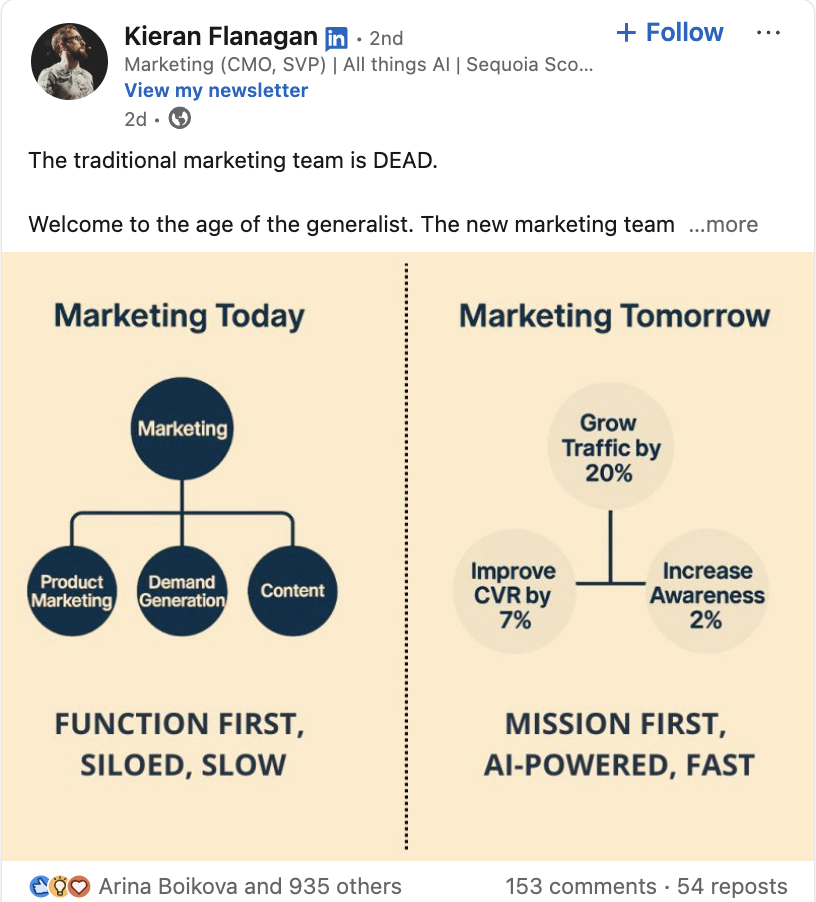
Becoming a thought leader involves these basic steps:
- Pick a niche you can own
- Speak from experience
- Share content when you have something useful to say
- Build genuine relationships with others
Why Is Thought Leadership Important?
Regularly producing compelling thought leadership content can:
- Build trust and authority
- Lead to speaking gigs, press coverage, podcast opportunities, and backlinks (links from other sites to yours)
- Attract like-minded talent, partners, clients, and investors
- Spark compelling discussions in Slack groups, via social media messages, etc.
Evan Knight, Founder of Thoughtful Content, consistently posts thought leadership content on LinkedIn.
In one week, four prospects reached out to him directly after seeing his posts. And a few of those calls turned into important clients for his agency.
He highlights this in one of his posts:

How to Create Thought Leadership Content: An 8-Step Framework
Here’s the exact framework I use when building thought leadership content from scratch:
1. Start with Business Goals and Understanding Your Audience
Before you develop thought leadership content, get clear on two things: what you’re trying to achieve and who you need to influence.
Start with the business goal.
Are you looking to become a go-to voice in a specific niche? Or increase trust and familiarity with a key audience segment?
Whatever it is, your thought leadership content should support that goal.
Next, think about the people you want to reach.
Answer these questions:
- Who are they?
- What do they assume about your category?
- What misconceptions are holding them back?
- What would they need to understand or believe to trust you?
You can find these insights by analyzing social media conversations, reviewing trending content in your niche, and speaking with your customer-facing teams.
For example, we analyzed common sales call questions and uncovered a key pain point: many marketers worry Google will penalize AI-generated content.
So, we ran research and published thought leadership on whether AI content can actually rank.

2. Brainstorm Strong, Experience-Backed Ideas
Thought leadership works best when it’s grounded in a strong, original idea you can speak to with authority.
Ask yourself:
- What have we seen or built that others haven’t?
- What lessons have we learned from our failures?
- What’s everyone saying that might not actually be true?
For instance, Jakub Rudnik posted about a lesson learned.
He shares how his instinct to publish more didn’t move the needle—until his team shifted the focus to fixing foundational issues first.

An example of challenging something that many people were saying is when I was one of the few posting about how AI could be great for content creation.
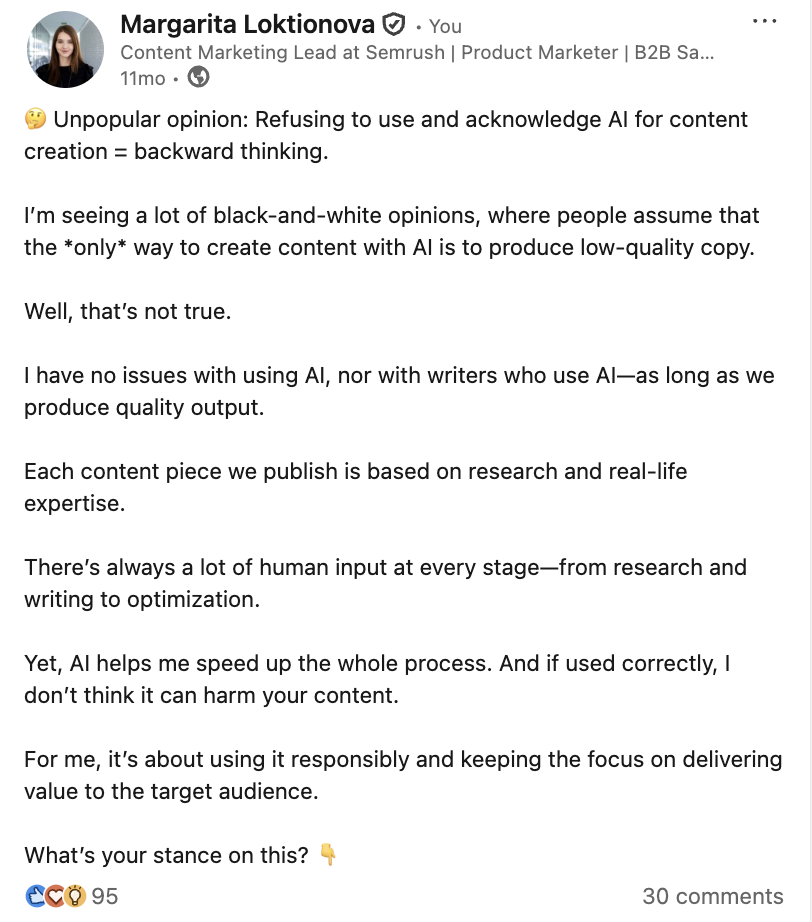
3. Identify the Right Thought Leader(s)
Thought leadership works best when it comes from those who have firsthand experience with the topic and genuine wisdom to share.
And that can be many different people.
Maybe it’s the CEO explaining a shift in direction. A product manager explaining a new approach to audience research. Or a customer success lead highlighting patterns they’ve noticed while working with clients.
Look for the people in your company who’ve built things, tested ideas, or worked directly with your audience/customers.
For example, Animalz spotlighted their own marketing director who built an AI-powered SEO tool based on a real internal need.
He had firsthand experience with the problem, tested a solution, and shared what he learned.

That’s the kind of practical insight that effective thought leadership is built on.
4. Choose the Right Formats and Channels for Your Ideas
Once you have both an idea and thought leader in mind, think about where the piece should live and what format would be best.
If it’s timely and doesn’t need much context (like a response to a recent trend, a clear opinion, or a quick takeaway), share it as a LinkedIn post.
Here’s one where I responded to Google’s updated stance on AI content being low in quality.

I opted for a highly visual format that captures attention as users are scrolling.
If your idea needs more space for exploration, opt for a long-form format.
For instance, you can write an article, create an in-depth video, or record a podcast episode.
Omniscient Digital’s podcast, “The Long Game,” is a great example.
Each episode delivers unique viewpoints from the founders and their guests over the course of 40 minutes to 120 minutes.
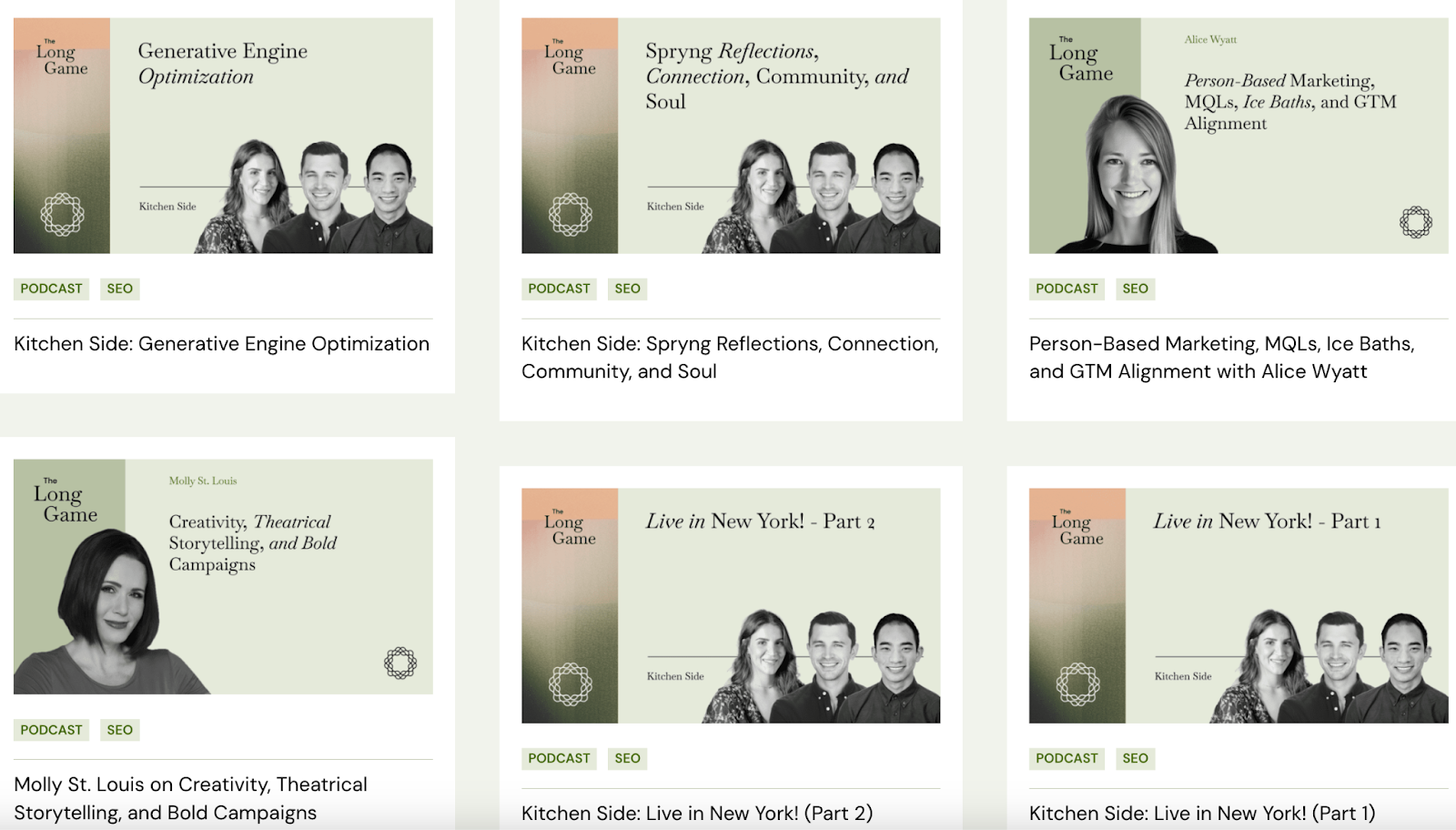
Other potential formats you could consider include infographics, gated reports, etc.
5. Plan Your Content
If you want your thought leadership to make an impact, you need a clear plan to turn your ideas into consistent content over time.
Start with a simple calendar or backlog to organize and prioritize topics.
This helps you keep track of what’s in progress, what’s coming next, and how everything connects to your larger goal.
Think about:
- Topics and themes you want to cover
- Who’s writing, editing, and publishing the content
- How does it get approved
- How often do you publish
- What channels you’ll use to distribute each piece
You can then create a simple spreadsheet to put it together:

6. Create Your Thought Leadership Content
Next, outline how your content will flow. Make sure you know:
- The key takeaway: What should the reader walk away with?
- The tone:What’s the right voice for the idea and audience (e.g., casual, authoritative, personal, or provocative)?
- The hook: How will you grab the reader’s attention in the first sentence?
- The structure: Will it be a story, a process explanation, or something else?
- The visuals: Are you going to incorporate any visual content to better convey the idea?
- The call-to-action (CTA): What do you want your audience to do next?
For example, this post by Nathan Adams has it all: a hook, a well-structured body, a key takeaway, and a CTA.
It also uses a friendly, conversational tone with clear language and direct questions. This makes the insights feel approachable and easy to understand.
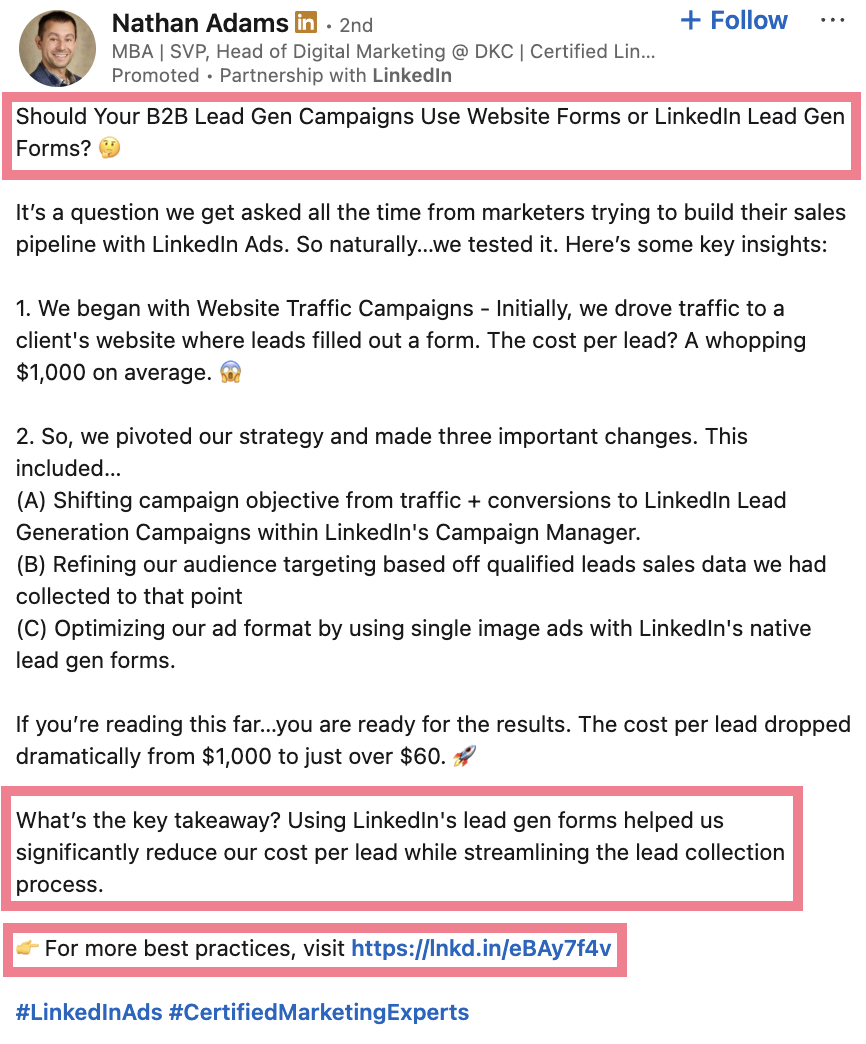
Want to streamline this process?
Using the right AI writing tools can help you move faster.
For example, I created a custom GPT trained on my LinkedIn posts.
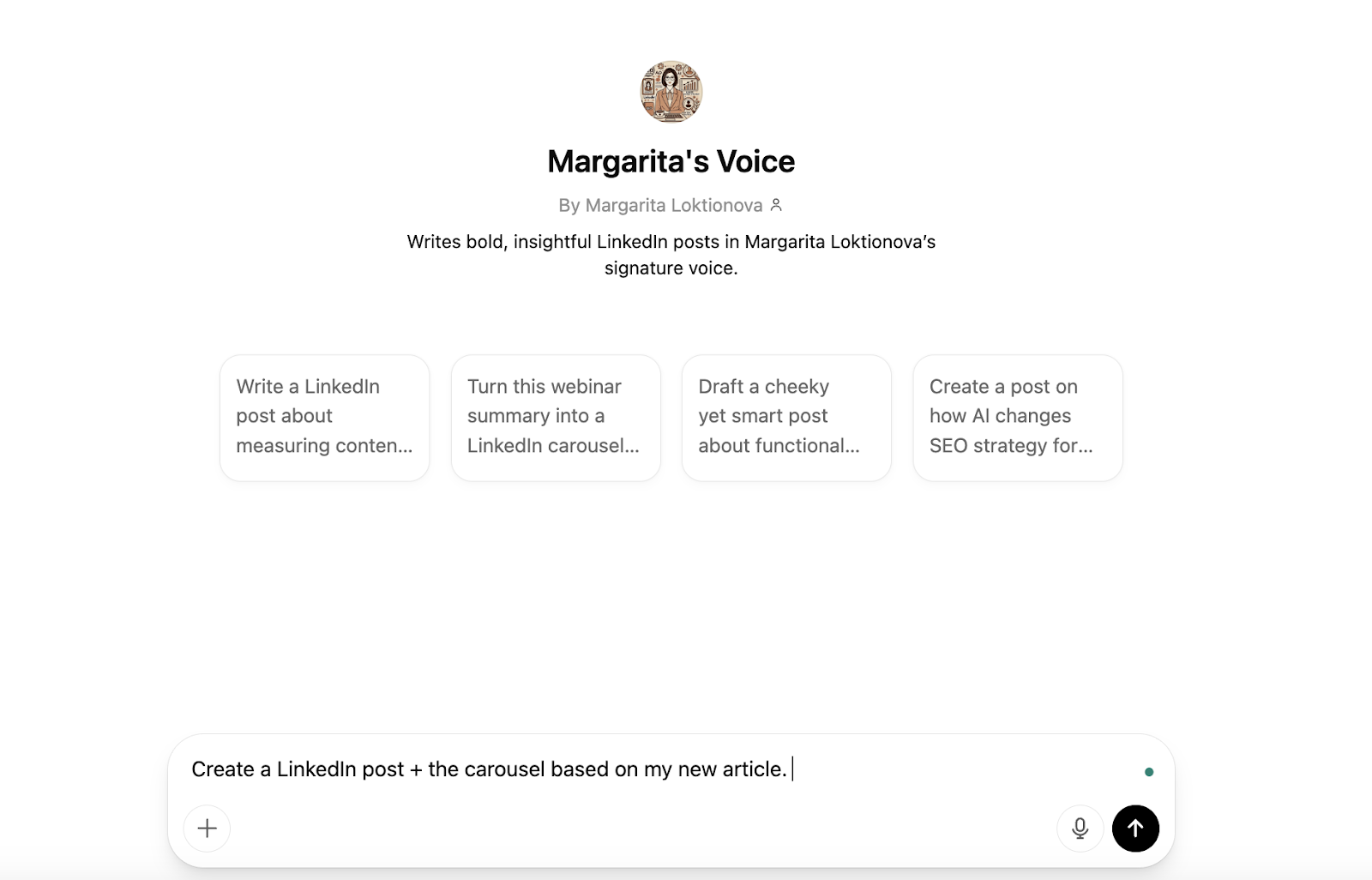
Every time I come up with an original idea and add it to a prompt, the tool generates a well-structured post that already uses my voice.
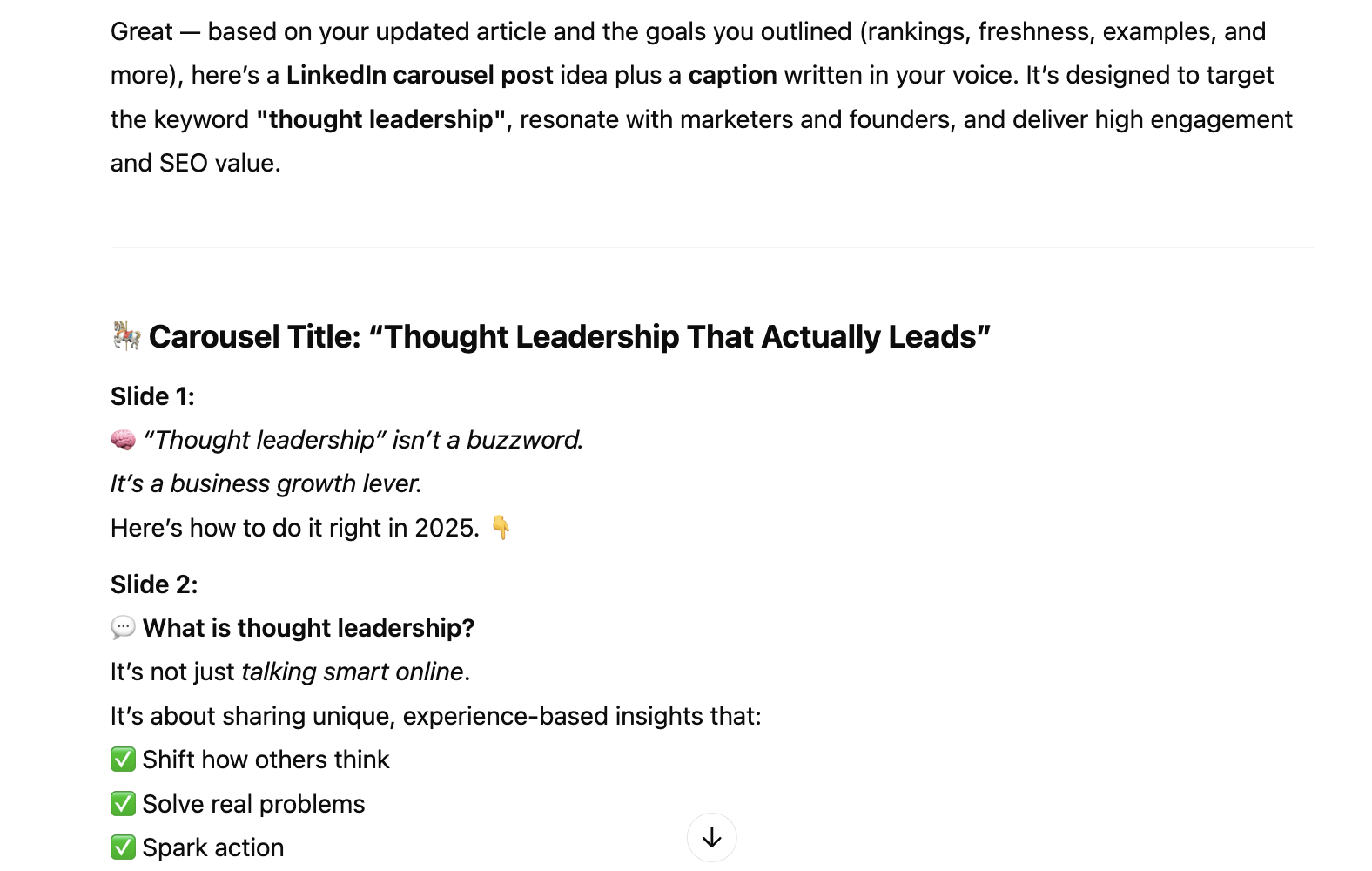
You can also speed up your thought leadership efforts by encouraging your team members to craft their own content.
At Semrush, we empower employees to build thought leadership by providing tools that help them create content faster, including design assets, copywriting support, and workshops.

7. Repurpose Thoughtfully
Turning your ideas into content for multiple channels is a great way to create more content and expand your reach with minimal effort.
For example:
- You record a podcast episode to share your take on AI in healthcare
- That turns into a carousel for LinkedIn (with a bold stat upfront)
- You expand on the LinkedIn post by turning it into a long-form blog post with examples and frameworks
- You cut the blog post into a few concepts and use them to create a series of YouTube Shorts
For example, Omniscient Digital does a great job of turning the podcast I mentioned earlier into LinkedIn content that the hosts share regularly.

8. Measure Your Thought Leadership Content’s Impact
Signals like DMs, connection invitations, and shares from peers are often better indicators of impact than traffic or engagement.
For example, I once shared a post featuring the Semrush AI Toolkit.
A few minutes later, a LinkedIn user replied: “Looking forward to trying the AI Toolkit!”—a clear sign the content is likely to drive action.

To measure the impact of your thought leadership, you can:
- Track engagement from high-value accounts: Look for comments, shares, or reactions from your ideal customer profile (ICP)
- Monitor direct messages and connection requests:Look for signals demonstrating genuine interest or intent
- Ask your sales team to log content touchpoints:Track which pieces leads engage with before reaching out
- Track traffic and conversions with UTM links: Add UTM parameters to URLs shared in thought leadership posts (e.g., on LinkedIn) and use Google Analytics (GA4) to see what content drives clicks and sales
- Analyze your overall visibility:Track your share of voice and other visibility metrics like media mentions and branded search volume
For instance, you can use Semrush’s AI Toolkit to analyze your visibility in AI tools like ChatGPT and track customer sentiment around your brand.

Changes in this data can show if your thought leadership is driving more conversation over time.
Three Amazing Thought Leadership Examples
Finally, let’s review some more examples that show what effective thought leadership looks like today.
1. Lara Sophie Bothur from Deloitte
Lara Sophie Bothur is a corporate influencer who works at Deloitte.
Her posts consistently spark engagement and meaningful conversations. And often outperform Deloitte’s official posts.

She shares content that highlights emerging tech in action, often through behind-the-scenes photos, personal reflections from global events, and clear takeaways on innovation and collaboration.
The result?
Her posts regularly expand Deloitte’s reach and position her as a relatable, credible voice on digital transformation.
2. Tommy Walker’s ‘The Cutting Room’ Podcast
“The Cutting Room” is hosted by Tommy Walker, founder of The Content Studio.
It takes you behind the scenes of how strong B2B content gets made.
Each episode feels like a real conversation—not a polished soundbite. And guests break down what worked, what didn’t, and why.
I had the chance to join an episode for a live edit of a content piece.
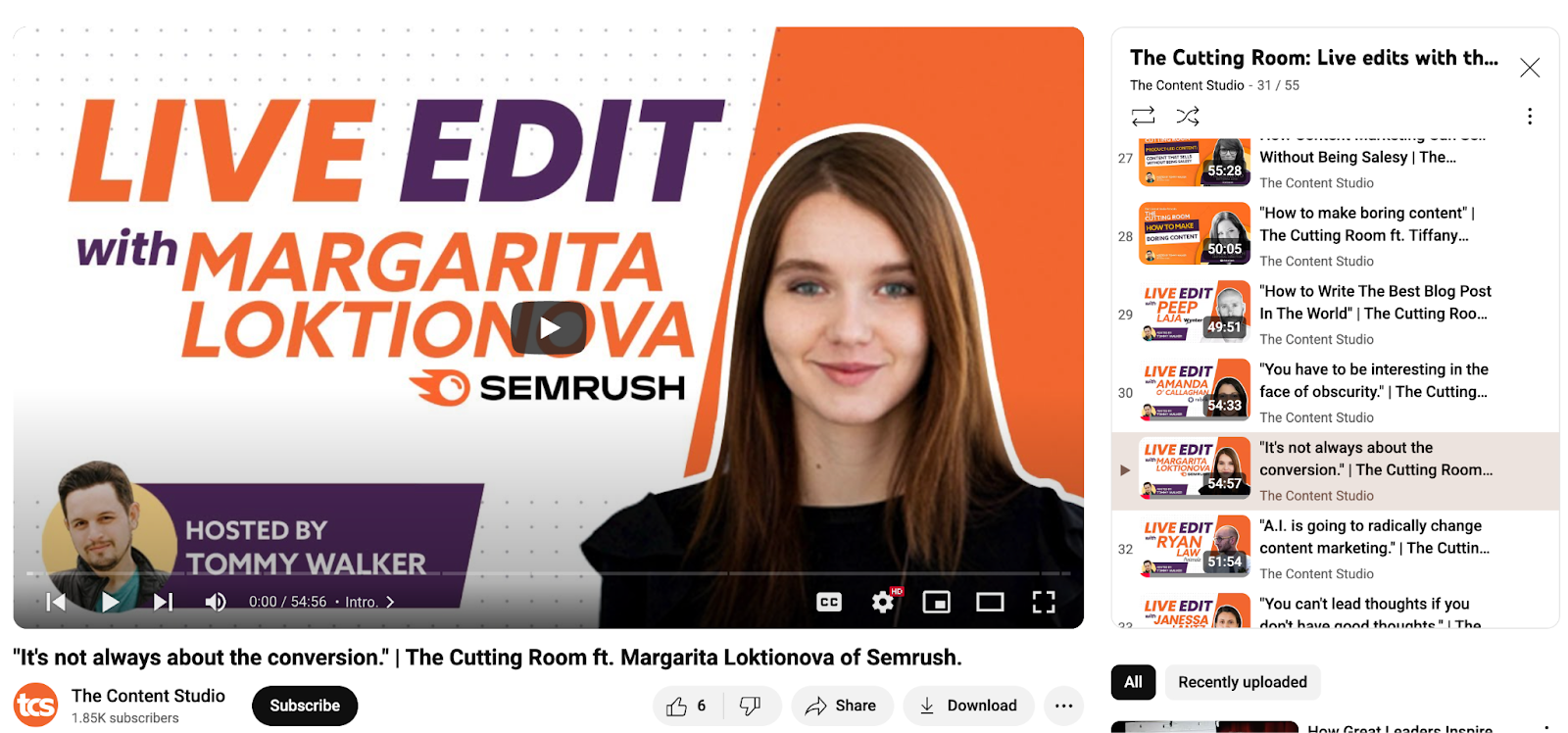
3. Erica Schneider, Founder of Cut the Fluff
Erica Schneider is the founder of Cut the Fluff, a company that teaches marketers how to write clearly, confidently, and without filler.
Her LinkedIn posts often include real before-and-after edits, client examples, original ideas, and coaching insights.
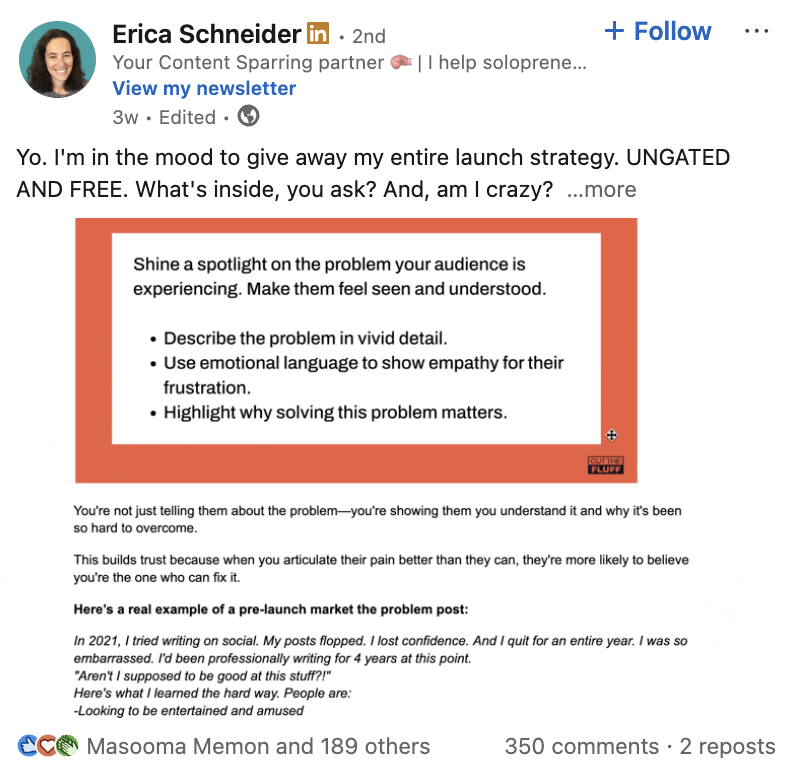
As a result, she’s grown a loyal audience of over 40k LinkedIn followers.
Challenge the Norm with Your Thought Leadership
Don’t settle for content that blends in.
Say what you’ve seen. Share what you’ve learned. Challenge what no longer works.
That’s how you get people to stop scrolling and start paying attention.
It’s how your ideas show up in high-stakes conversations behind the scenes.
And it’s how you build real trust, authority, and influence in your space.